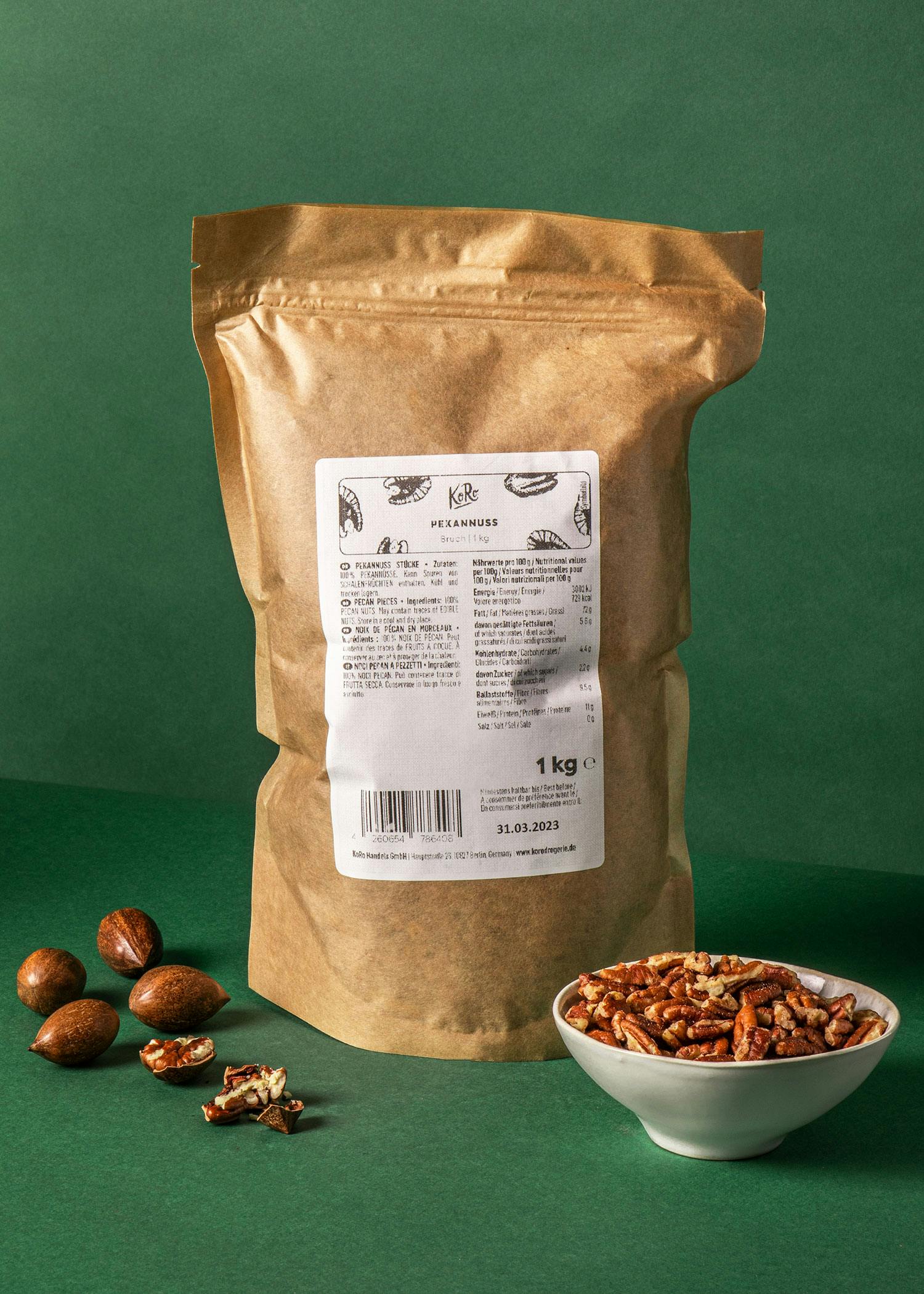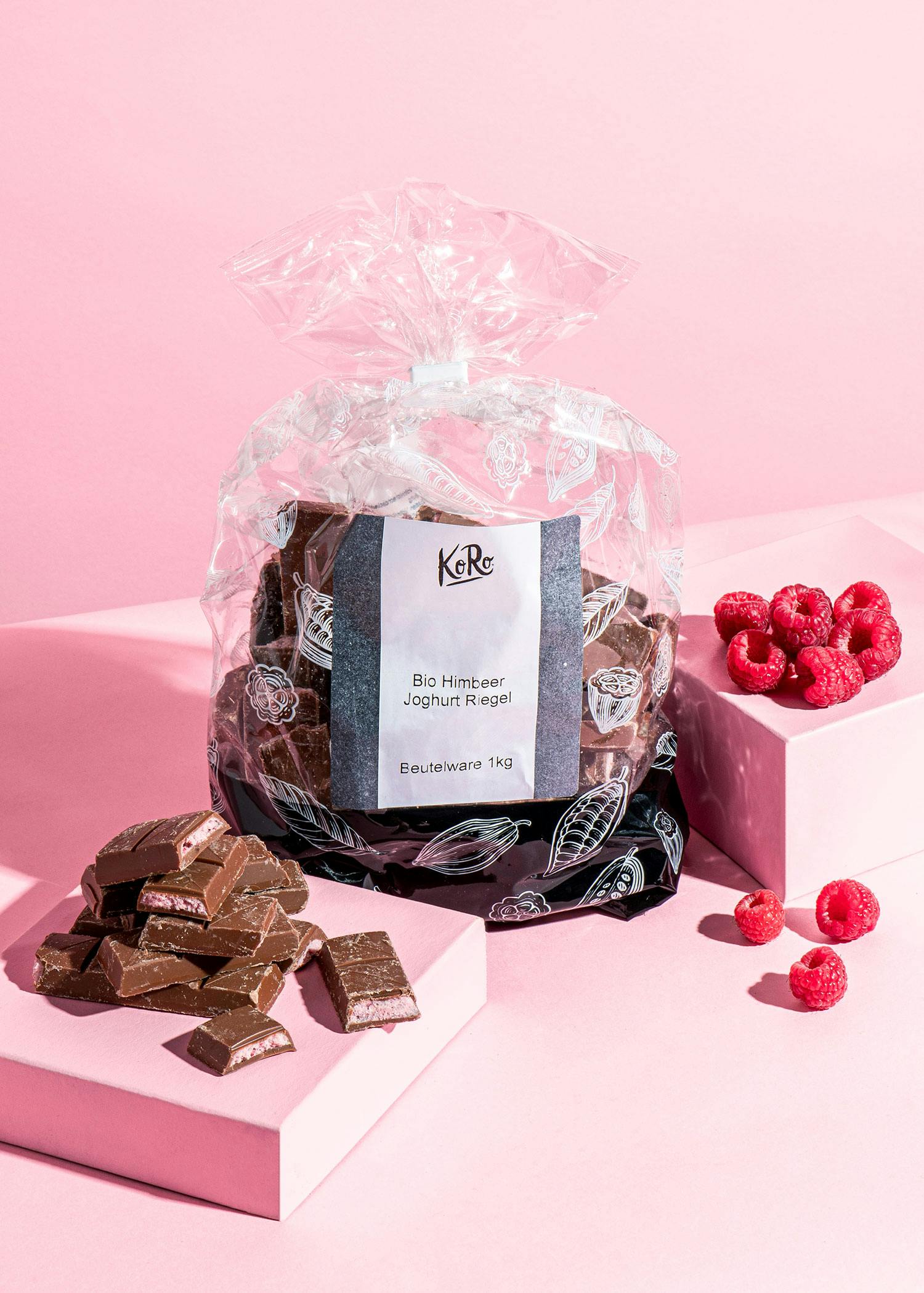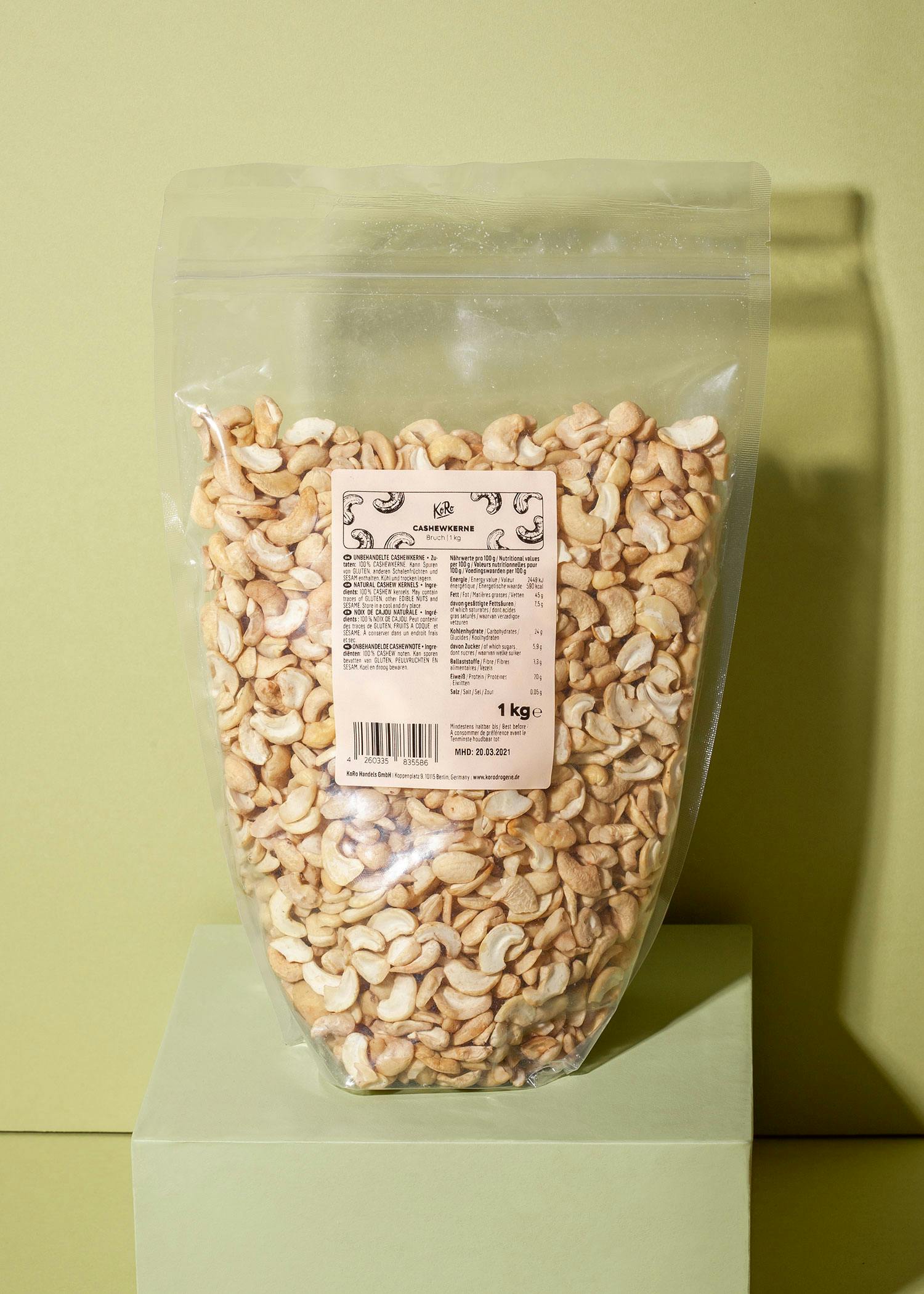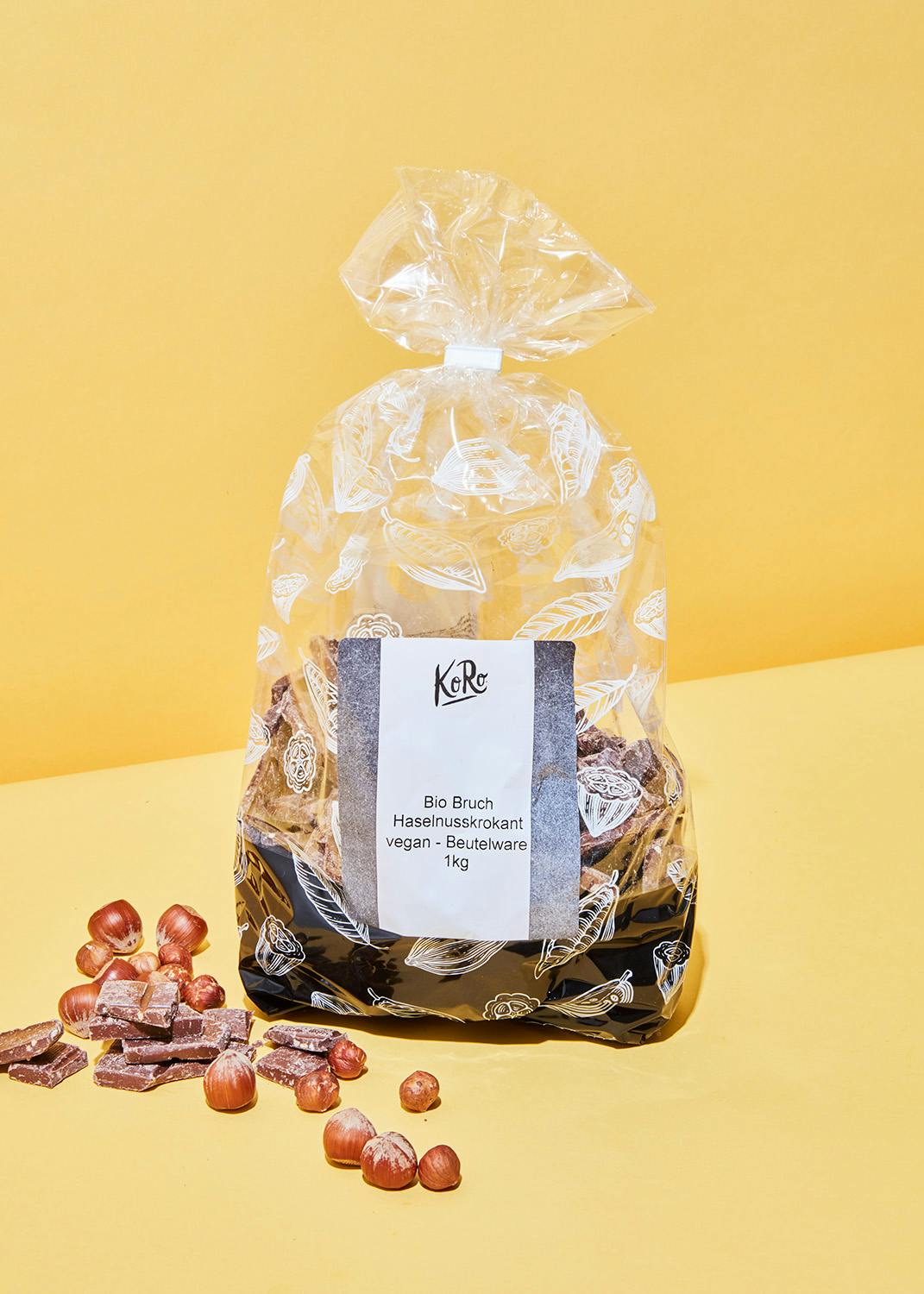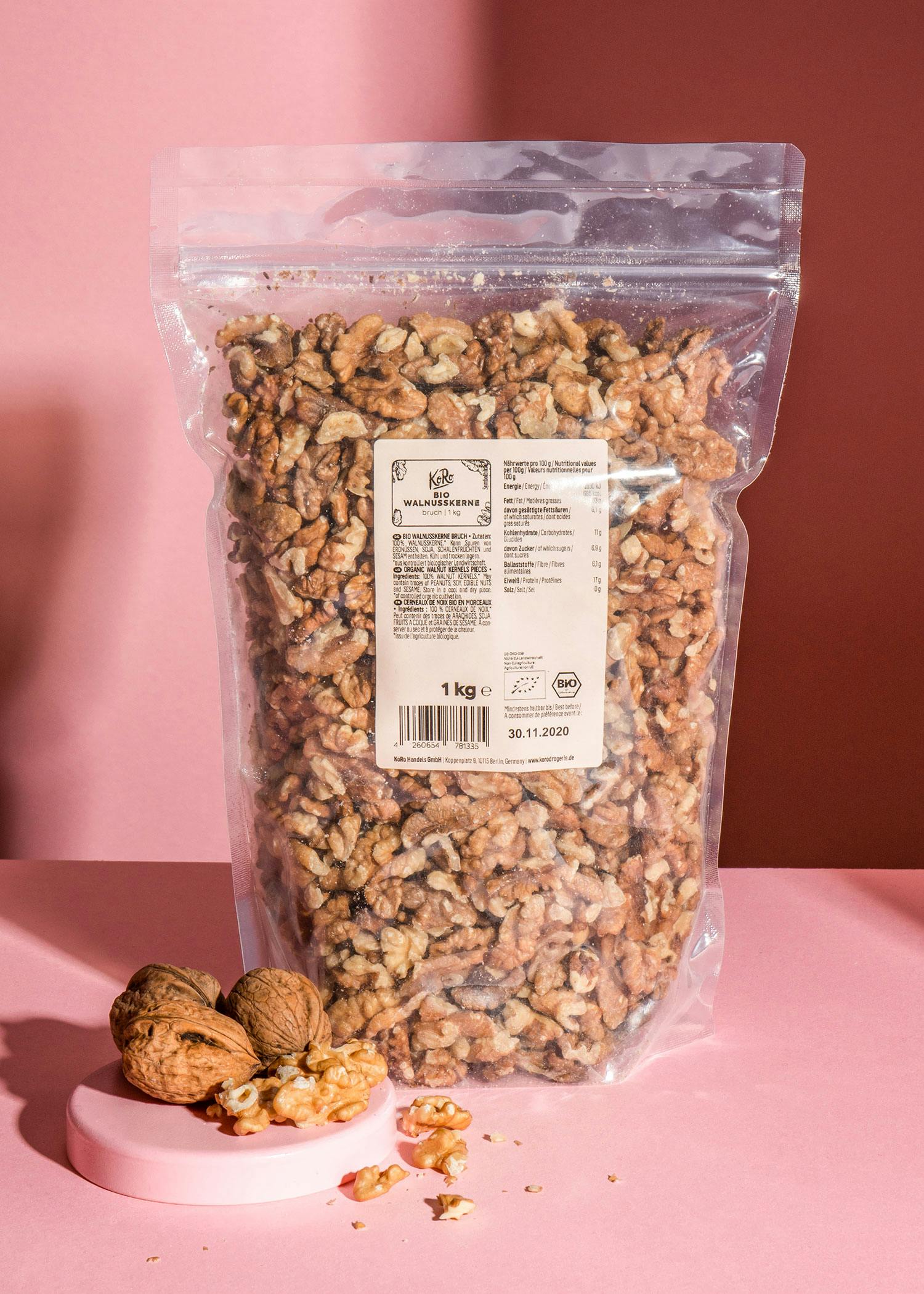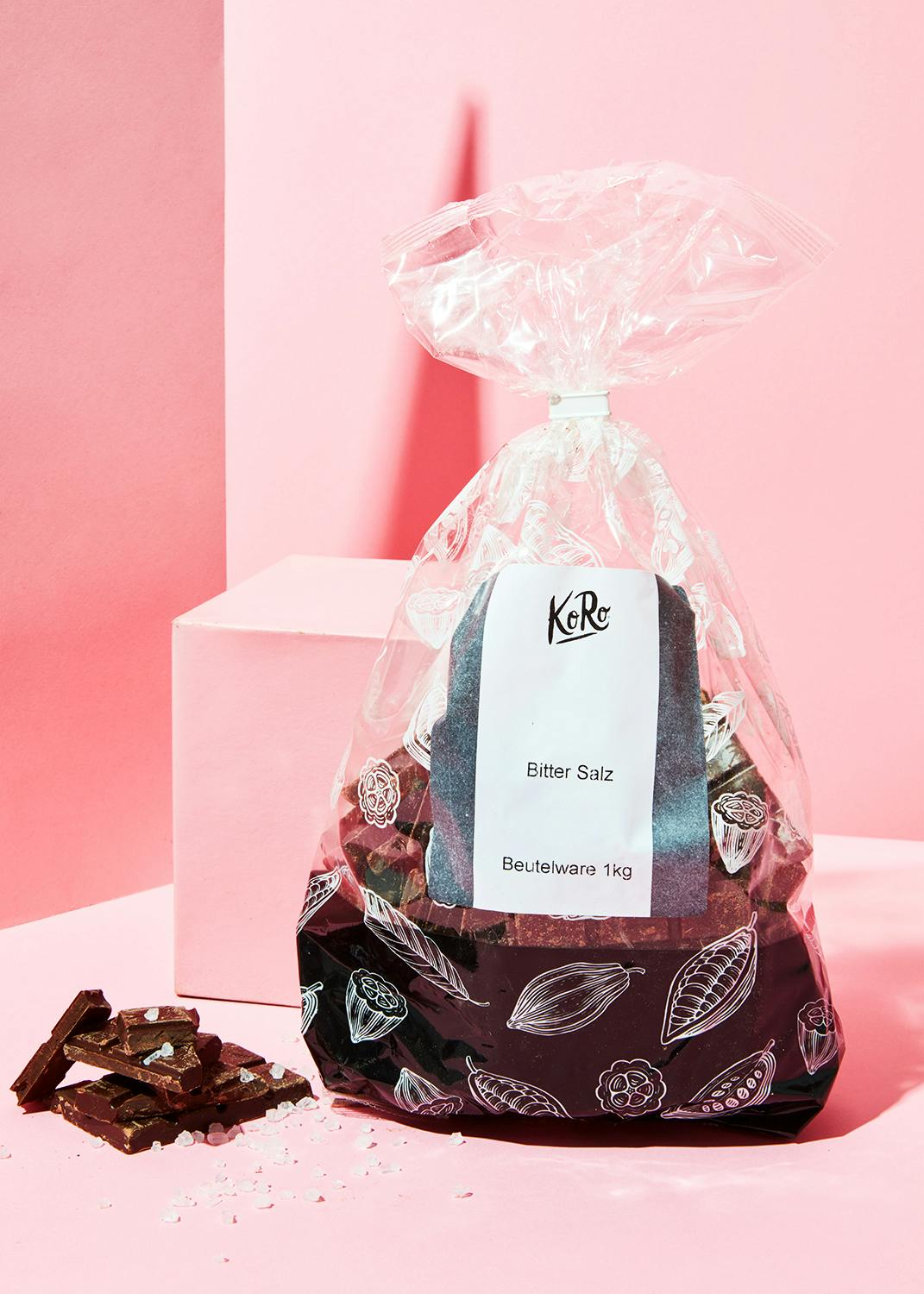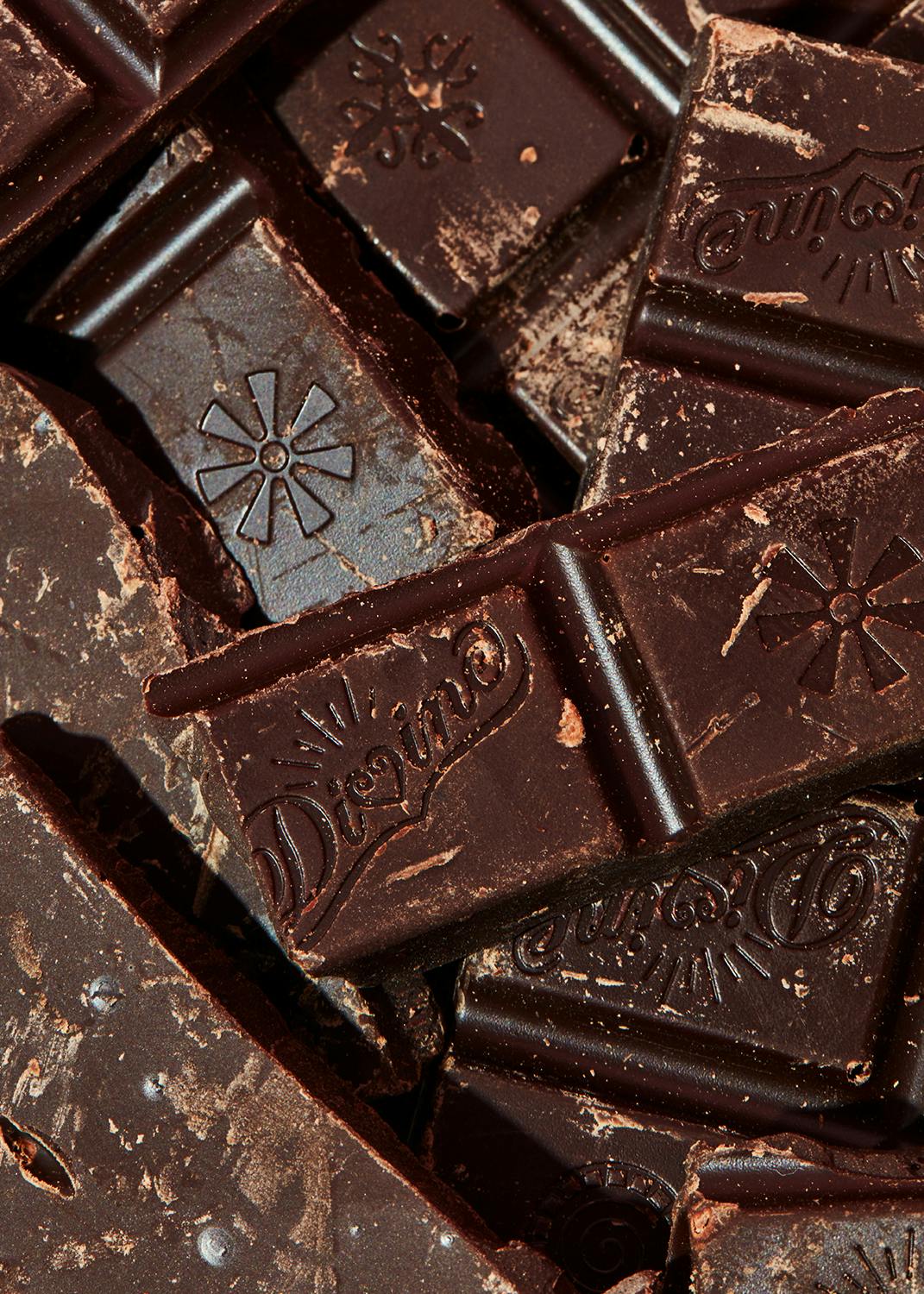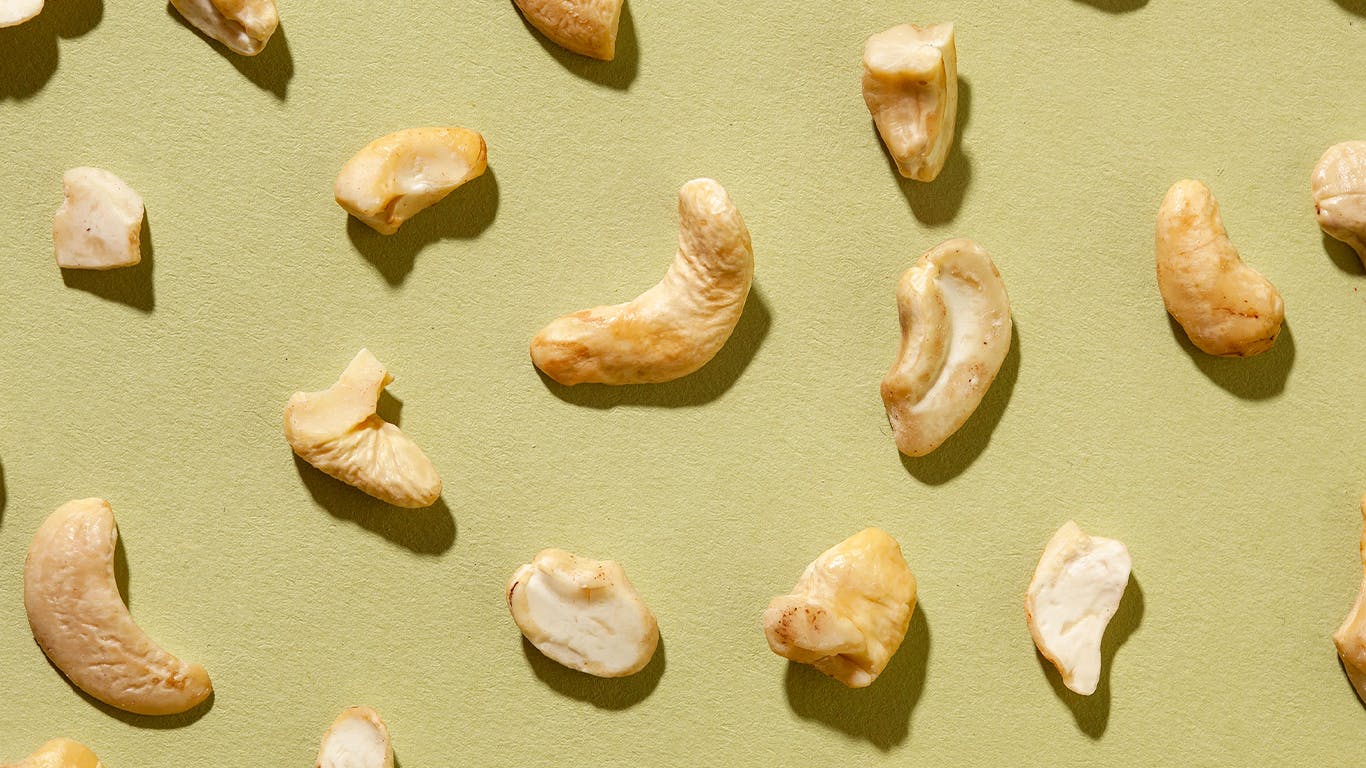
We spoke to two KoRo colleagues and asked them to clear up the topic of broken or damaged goods.
Celine is a Senior Sourcing Manager and has been in charge of testing various snacks before they land in our shop and on supermarket shelves for the past four years. Whether broken or not — she specialises in nuts.
Roman has been a Senior Category Manager since 2023 and is an expert when it comes to chocolate and other sweet snacks or spreads.

Hello you two! We can regularly find “broken” products in our online shop. What exactly does this mean?
Celine: When it comes to nuts, it means that they don't fully meet certain guidelines. There is a very precise guideline for each nut, which sets the standard and specifies the quality each nut must meet, and includes pictures. It covers aspects like how light or dark a nut should be, and it records the "defects". For example, it notes how much of a certain nut can be missing to still be sold as a "whole nut". This is different for each type of nut. For the most part, we follow US standards: for pecans, for instance, there are different breakage sizes called "pieces". To be classified as small, medium, or large, the pieces must have certain diameters. Regardless of the size, we always ensure the nuts are of the highest quality.
Roman: During the production of chocolate, chocolate that doesn't meet certain specifications is sorted out. Then it no longer counts as "A-grade". Even with simple visual defects, the chocolate counts as “broken” and is considered a “B-grade” product. And don’t worry, we always label products if allergens are present.
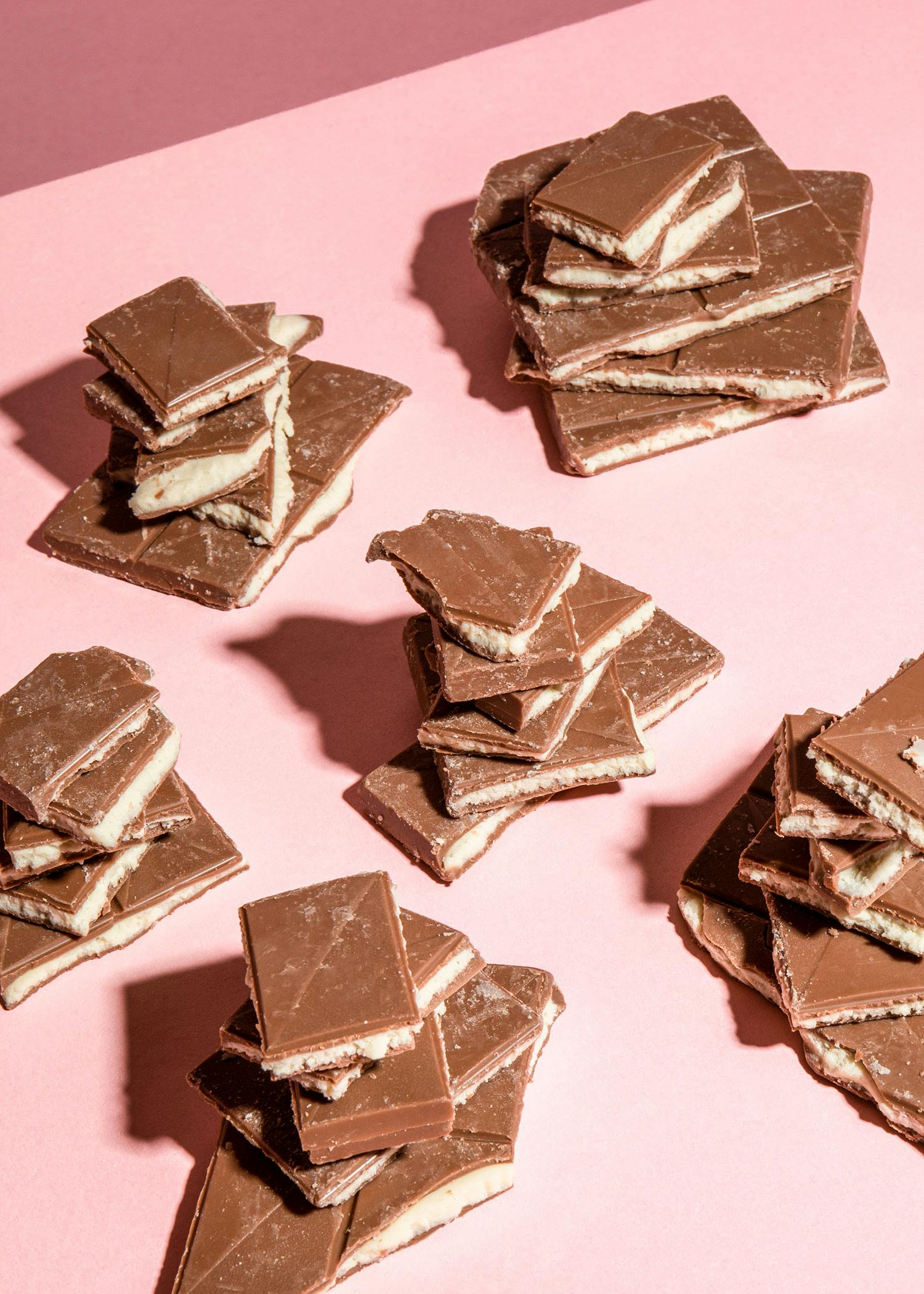
So this means that the products are not necessarily defective as a consumer might think when hearing or reading the term “broken goods”?
Roman: Exactly. The product is not necessarily broken, but this term is used anyways.
How do broken goods appear?
Celine: It can happen anywhere during production. During harvesting, transport, the cracking process, or cleaning, nuts can break at any point. These processes are mostly mechanised nowadays, but breakage can still occur. It's different, for example, with hand-cracked nuts. Our whole walnut kernels, for example, are hand-cracked in Chile and their quality is therefore outstanding – they, look great, and are about 90% intact. Machines don't always do it quite as well, so there is always a significant "broken" percentage left over. For cashews, for example, about 30% of the nuts break.
Roman: When producing chocolate bars, various types are produced in one production line per day. When switching types, you also switch raw materials, using different fillings and recipes. Because it's such a continuous production process, during type changes, you have a certain quantity of bars that can still contain remnants from the previous production. So, you might end up with a product that isn't 100% chocolate A or 100% chocolate B.
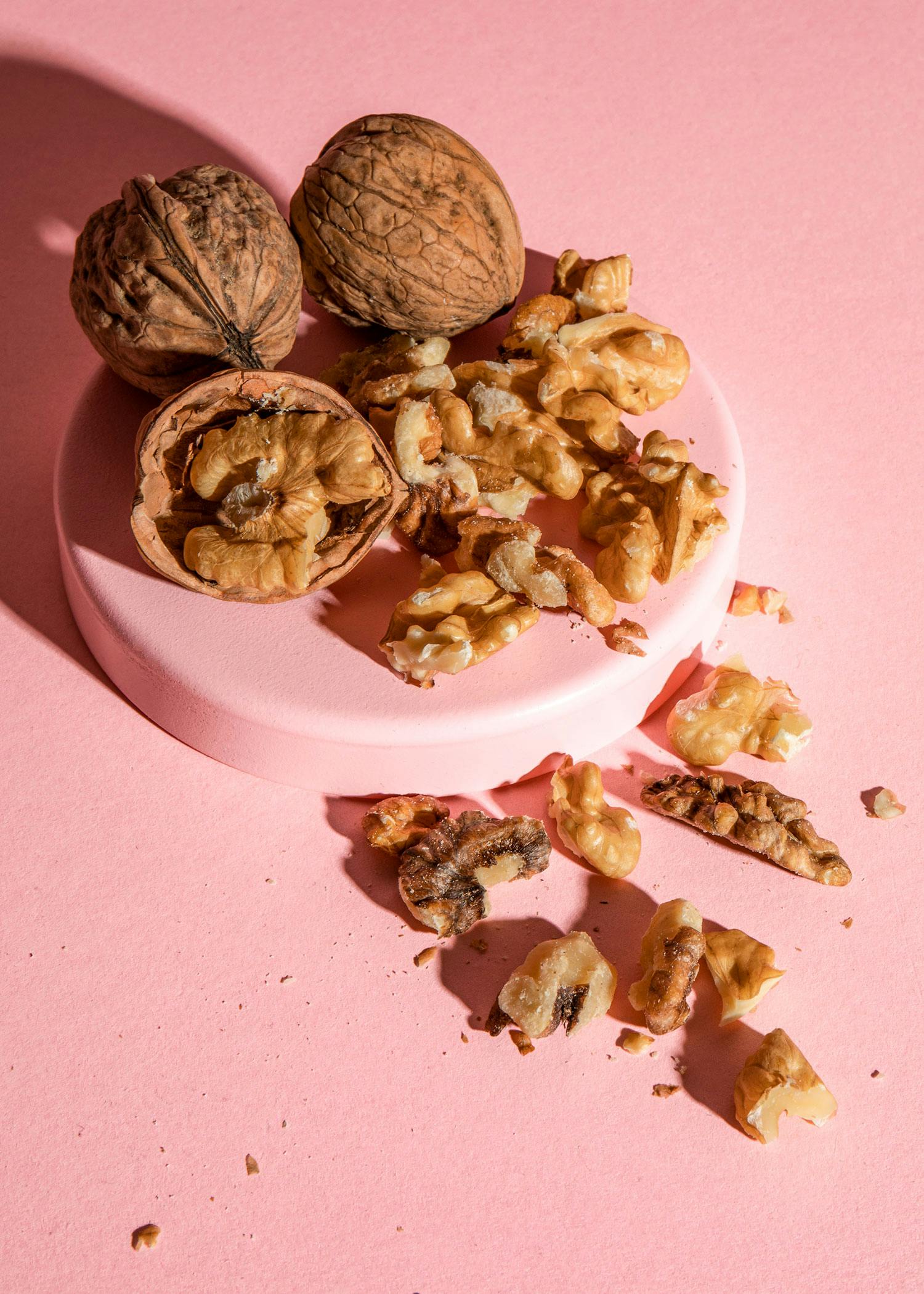
Why are the products cheaper?
Celine: Because there are a lot of broken goods. There are many nuts that have minor defects or where a piece has broken off. Whole walnuts, for example, are more popular because they stay fresh longer, broken walnuts spoil faster due to exposure to oil. This isn't inherently bad, but as a producer, you just have to be more careful with storage. Ultimately, end consumers usually don't care, but for example, bakeries prefer whole nuts for decoration. So, the demand for whole nuts is greater than what's available. Consequently, broken goods are cheaper.
Roman: As for the chocolate, it ends up cheaper because it's sorted out goods. Additionally, with “B-grade” goods, we also save on packaging, following the KoRo principle. By skipping this stage of trade, we can avoid unnecessary packaging materials and the associated cost.
Roman : The best way to use our deliciously imperfect chocolate is to snack on it straight out of the bag! It is also great for parties and for baking, because of the larger quantities. Something lovely you can also do is to repackage the chocolate pieces yourself, maybe mixed with other favourites, and give them away as cute and tasty gifts.
Celine: Just as for the broken chocolate, you can use nut pieces just like whole nuts. I often add nuts to my muesli – so, when using them for breakfasts and snacks, it's actually more convenient if the nuts are already broken into smaller pieces. It's no wonder that our cashew crush are one of our bestsellers! You can also use the products for cooking or baking since nuts need to be usually chopped up anyway. If you're particularly motivated, you can use the broken products to make your own nut butter or nut milk!
Thank you both! And for the future: break a leg, cashews and chocolates!
